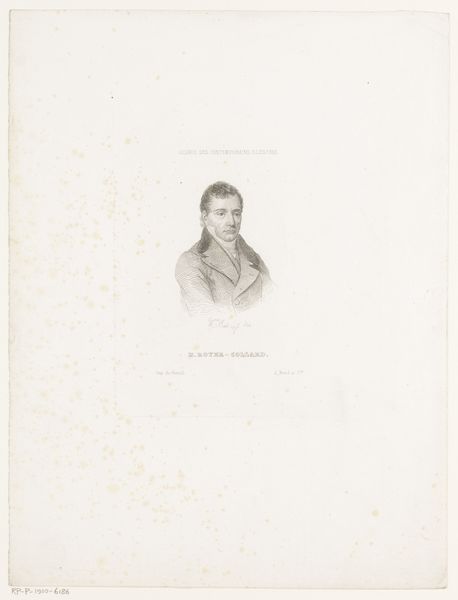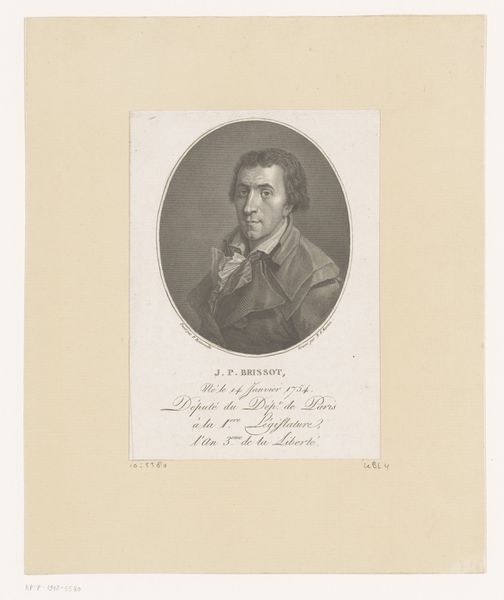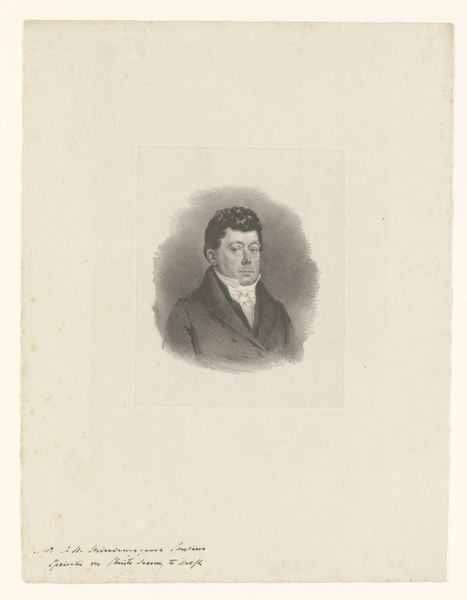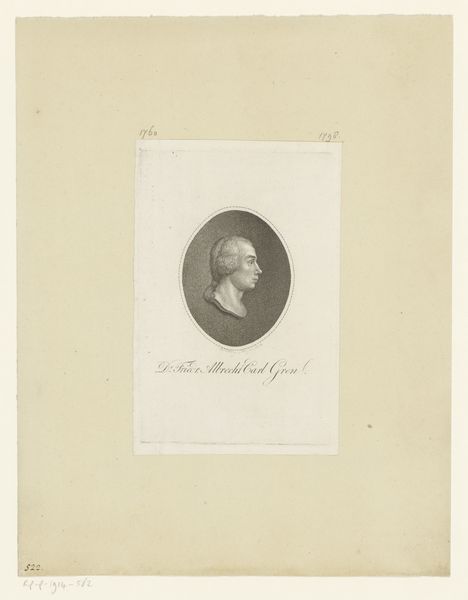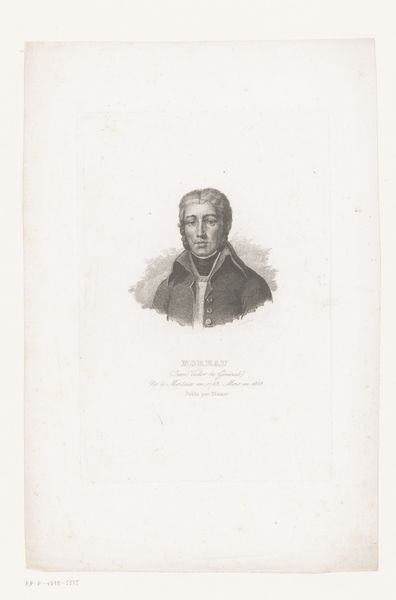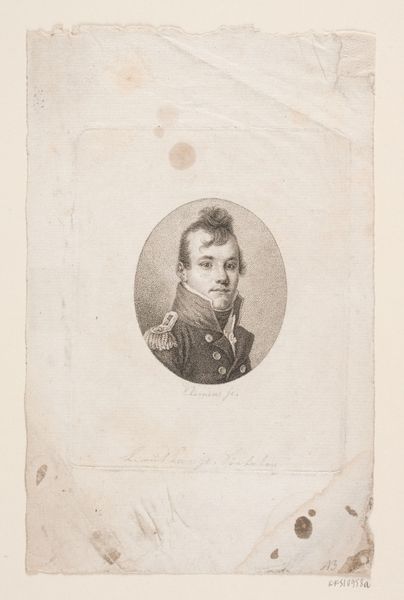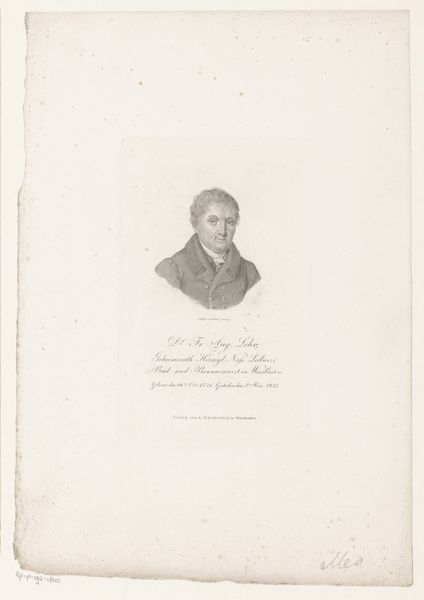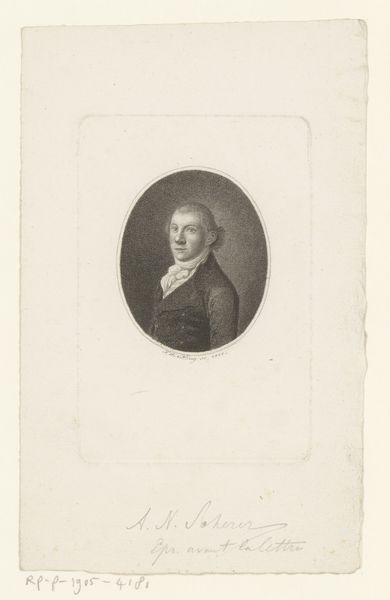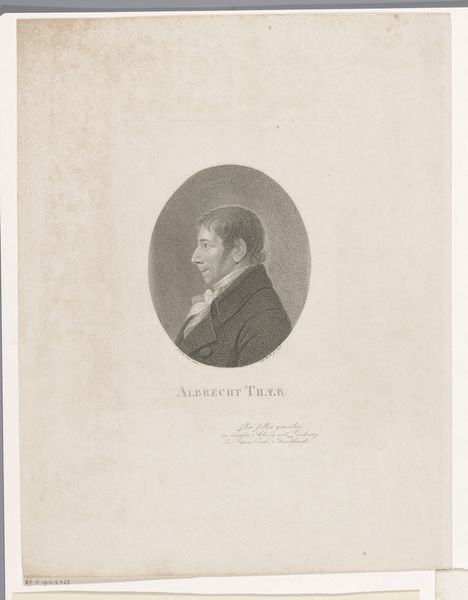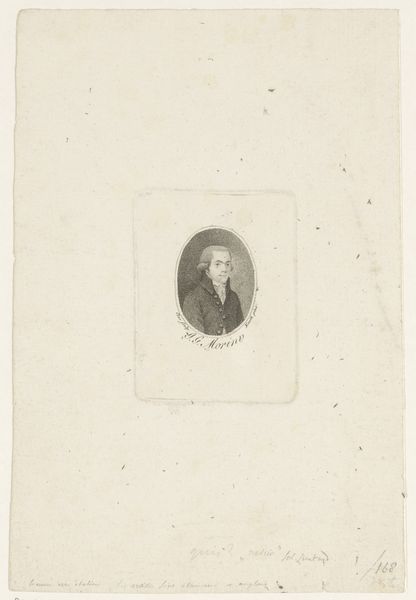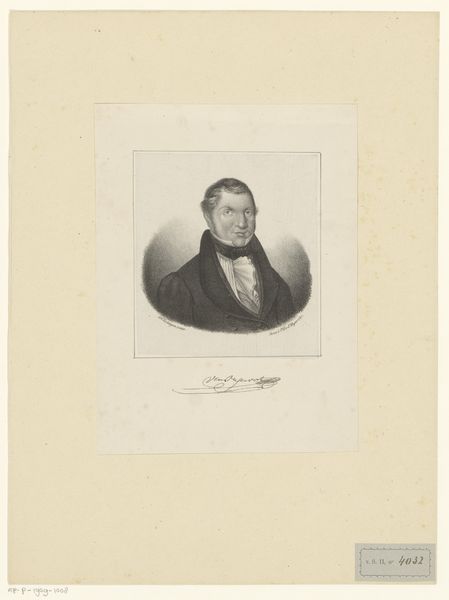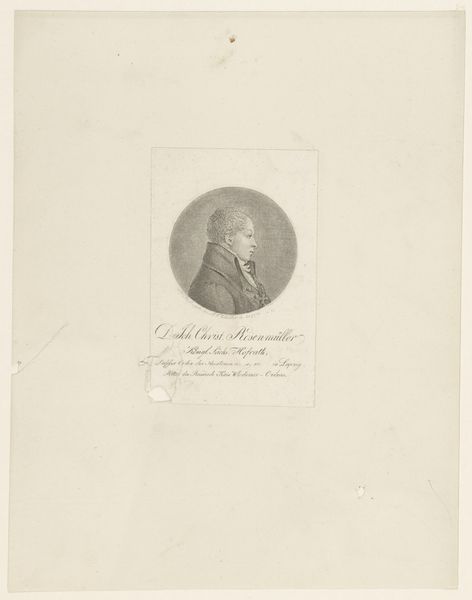
Dimensions: height 140 mm, width 95 mm
Copyright: Rijks Museum: Open Domain
Curator: Here we have "Portret van Maximus von Imhof", an engraving on paper crafted sometime between 1768 and 1815 by Joseph Peter Paul Rauschmayr. What are your initial thoughts? Editor: Stark. The man's gaze is intensely direct, almost confrontational. It's a simple composition, framed by the circular border, but it feels quite powerful. Curator: It is quite a penetrating stare, isn't it? Rauschmayr lived in a time of immense social upheaval. The late 18th and early 19th centuries saw revolutions and shifting power dynamics. The portrayal of individuals, particularly within the church, took on new significance. It moved past pure glorification and considered a broader human context. Editor: Right. Considering Imhof's attire, we must consider the impact the church had on individual identity. This engraving challenges viewers to question the complex ways in which institutional affiliations can shape our self-perception and our social standing. Does it subvert that? Or reinforce it? Curator: It's fascinating to consider. Think about the materials—engraving, a medium reliant on reproducibility. The portrait, as a commodity, has an agency that shapes its cultural function. It allows for the wider distribution of a certain visual, maybe for specific political reasons or to bolster societal acceptance. Editor: Definitely. And to what degree does this piece immortalize or perhaps even canonize Maximus von Imhof in the collective memory? This engraving isn't merely a depiction; it's a contribution to his legacy and the narratives that circulate about him and his socio-political roles within religious institution. Curator: I agree entirely. And, looking at the way the face is rendered, there’s a real attempt at realism, yet simultaneously, he is ennobled by the technique. This kind of ambiguity gets right to the heart of Baroque portraiture, negotiating personal expression with broader ideological imperatives. Editor: Precisely. There's so much to unpack in what might at first glance seem to be just a simple portrait. It reflects broader dynamics of faith, identity and the rise of individualism in 18th-century Europe. Curator: Absolutely. It gives you pause. Thank you.
Comments
No comments
Be the first to comment and join the conversation on the ultimate creative platform.
